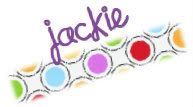Writing in our little corner of the school is constantly evolving and growing! Like most subjects, the way we teach writing changes from year to year, class to class, and often student to student. This year I was surprised to find that a lot of our third graders had poor handwriting...a few were nearly illegible! I kid you not! So I started with the basics. We generally begin teaching cursive at the beginning of third grade, but my kiddos were not ready for that this year!
I had to improve their handwriting skills, so we talked and talked about the importance of neat handwriting. I wrote on the board in different levels of "sloppiness", and we discussed how easy or hard it was to read the different examples.

All capital letters and the tall lowercase letters touch floor and the roof. Most lowercase letters like a, e, m, and v sit on the floor and look out of the window. Letters like g, y, and p sit on the floor and hang out in the basement. It's a really easy way to talk about letter formation with the kids. It's something they can all relate to pretty easily!
Since we straightened out our writing and learned the correct letter formation we could move on to doing some real writing! My biggest
I think I have finally found a solution that works for me and for the kids! I've found that it's unreasonable to expect my third graders to do everything right at the beginning of the year, so now we take it a little bit at time. Instead of marking every mistake on their very first piece of writing and destroying their confidence, I focus on the things that I know they have learned! I'll check for capital letters, end marks, and complete sentences in their first piece of writing, and we add more conventions of writing to that as we progress through the year.
Another thing that I have begun doing this year is allowing more time for peer editing and self assessment of the kids' writing. I love allowing them the opportunity to look for mistakes before I do. It gives them an extra opportunity to improve their work and more practice in finding the little mistakes that we all look over sometimes. We do this from the beginning of the year on, and we always remind each other of the importance of checking our friends' work respectfully. I use checklists or rubrics to lead my little editors in the right direction and remind them what they're looking for. Whenever possible I print the checklists or rubrics on sticker paper, and we stick them right into a corner of the work we're looking over.
This is one of the checklists we used about 3 months into the year. We had already learned about the parts of a letter and practiced writing letters together in class.
We used this peer editing checklist after writing a letter to Santa! As the editor looked over their friend's letter they marked any mistakes they saw and then filled out the checklist. Click on the picture to download your own copy! {{Updated May 30 to correct download link - sorry for the mistake!}}
I've used peer editing and self-assessment in other ways in my classroom as well. You can see one of the checklists I used near the end of the year in my blog post about our adventures with the hilarious "Sideways Stories from Wayside School" by Louis Sachar! Next year I want to keep improving my writing instruction and implement writer's workshop in my classroom!
How do you make grading writing assignments and giving feedback a more manageable task in your class? Do you have any tips for a writer's workshop beginner?
There's always more to learn!



No comments:
Post a Comment